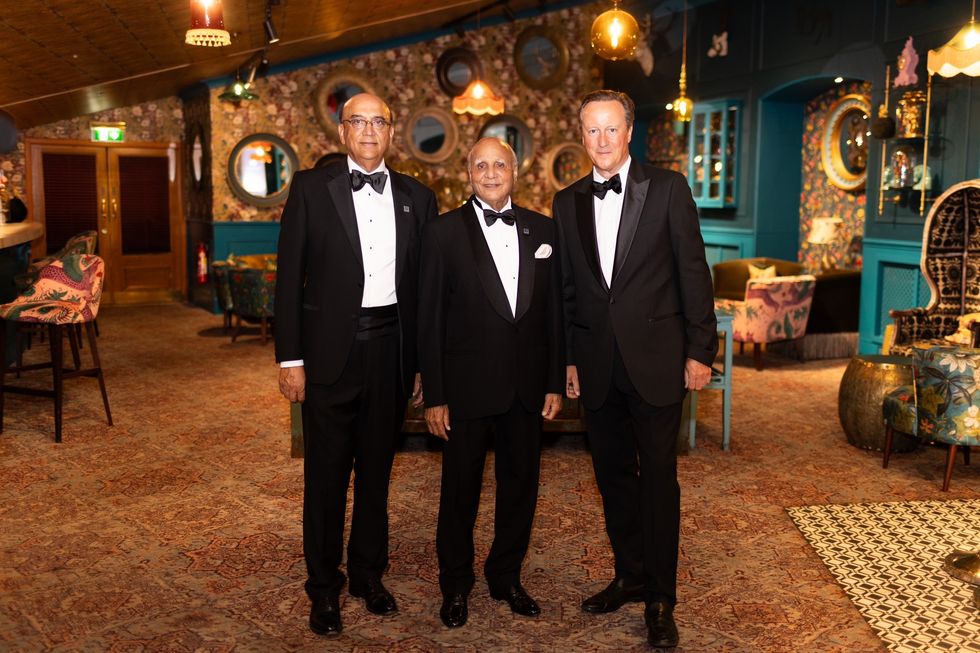BRITISH ASIAN students across the country celebrated top A-level grades last Thursday (18), with one school in Newham – where 71 per cent of residents are from BAME communities – sending a remarkable 92 students to Oxford and Cambridge.
Nearly 90 per cent of students from Brampton Manor Academy in London’s East Ham achieved straight A* or A grades, with 470 students going to one of the prestigious Russell Group universities.
Many of the top students are from under-represented ethnic groups, qualify for free school lunches, or will be the first in their families to enrol in college.
Mehnaz Mushafa will be the first person from her family to attend university when she heads off to Oxford to study philosophy, politics and economics.
Discussing the difficulties of lockdown learning, she said: “It was hard not being with my friends, but the fact that we kept up with our entire schedule of live courses online while still in school uniform and with our cameras on really helped.”

Brampton Manor Academy opened in 2012 with the aim of sending more underprivileged students to the best universities. Its success in recent years has seen it dubbed as the East End’s rival to Eton.
In a short span of 10 years, the academy has sent 300 students to Oxbridge. They had 55 offers last year from Oxford and Cambridge compared to 48 for Eton, whose numbers have dropped significantly from 2014 when they had 99 offers.
The families of three students – Daisy Agidi, Saamiya Moallim and Azeez Shekoni – will see all three following in the footsteps of their older siblings, who are studying at Oxbridge having completed their A-levels at Brampton Manor.
Shekoni, who plans to study medicine at Oxford, will join his brother Harun, who is studying philosophy, politics and economics there.
He said: “Going to Oxford is something me and my brother had both dreamed about for a long time, so when I got my offer, it was a special moment for me and my family. Coming to Brampton taught me that everyone has the potential to achieve their goals, regardless of their background, with hard work and determination.”
The executive principal, Dr Dayo Olukoshi OBE, said: “We are exceptionally proud of what our students have achieved. They have shown incredible resilience and determination to ensure the disruption experienced over the past couple of years has not halted their path to success.
“We passionately believe that there is no limit to what our students can achieve with sufficient effort and determination, and I am not at all surprised that two of the world’s best universities have recognised their talent by offering them places.”
There was an overall drop of the number of students achieving top grades, with 36.4 per cent of A-levels awarded an A or A*. That is a fall of 8.4 percentage points compared to last year, when grades were decided by teacher assessment due to the Covid-19 pandemic.
In London, 39 per cent of students were given an A or A*, making it the second-best performing region in the country, just behind the south-east, which scored 39.5 per cent.
London also saw the biggest improvement in exam grades compared to 2019.
Queen Elizabeth School in Barnet celebrated its best-ever results, with seven out of every 10 A-levels awarded the highest-possible A* grade, with 35 students going to Oxford and Cambridge.

It capped-off a brilliant year for the school after it was rated ‘outstanding’ by Ofsted and awarded the Sunday Times’ coveted State Secondary School of the Year title.
An incredible 71 of the 167- strong cohort (42.5 per cent) achieved straight A* grades.
Among them was Siddhant Kansal, who will read medicine at Imperial College. The 18-year-old from Enfield, who volunteered at London’s Whipps Cross Hospital, was awarded A* in German, biology, chemistry and mathematics.
Kansal praised the school’s “shared vision and enthusiasm”, with everyone wanting to do well.
“It’s quite infectious,” he said. “The teachers want you to get better – (they consider) how can they help you get to the next stage? I do have to say that I really enjoyed all seven years here. It was very difficult at first, with a huge learning curve, because of the higher workload and higher standards.”
Identical twins Beuran and Prajish Kannan both gained four A*s – a remarkable eight top grades between them.
Beuran will read chemical engineering at Girton College, Cambridge, while Prajish will study medicine at Churchill College, also at Cambridge.
“I am delighted that we have been able to crown the year with such a magnificent set of results, notable especially for a substantial increase at the very top,” said the headmaster, Neil Enright.
“These brilliant outcomes are well deserved and are testament to both the talent and dedication of pupils and staff, and to the quality of education maintained throughout the last two-and-a-half years.
“The fact that nationally pupils are being warned of lower grades and unusually strong competition for university places makes our own boys’ results all the more impressive. The vast majority here will secure their first choice of university.”
The John Lyon school in Harrow-on-the-Hill supports a number of students with bursary schemes and their efforts were rewarded with excellent grades.
Vinay Kapoor achieved three A*s and will read politics at the University of Warwick, a top-10 UK institution. As head boy, Kapoor championed student welfare and the school’s student mentor scheme.
“I’m delighted with my results. I have had the privilege of serving as head boy this year and I am so proud of my cohort for their excellent results. I would like to thank the school for all their support – the teachers have been nothing short of brilliant. I am now looking forward to university life at Warwick,” he said.

Another student, Ayaan Haneef is headed to the London School of Economics to study philosophy and economics after gaining three A*s.
Haneef, who has played tennis at international level and reached the top 100 in the UK, volunteered at a primary school, assisting young children with mathematics through a John Lyon partnership.
“I am thrilled that my two years of hard work has paid off,” he said.
“The school has guided me very well and the staff have been very supportive, especially during Covid and the lockdowns. I’m really excited to start university and I would like to thank my mum and dad for pushing me and helping me throughout my school life."


















 Sir Anwar Pervez
Sir Anwar Pervez  Lord Zameer Choudrey, Sir Anwar Pervez and Lord David CameronBestway
Lord Zameer Choudrey, Sir Anwar Pervez and Lord David CameronBestway